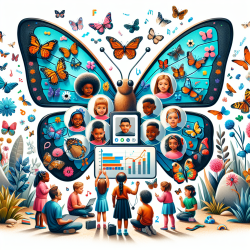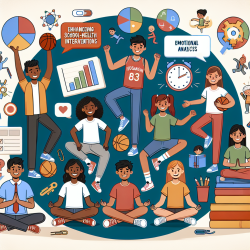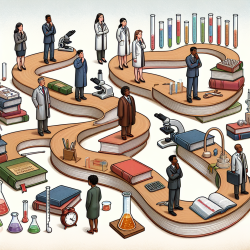Introduction
In the world of speech-language pathology, data-driven decisions and evidence-based practices are essential for achieving the best outcomes for children. Interestingly, we can draw inspiration from seemingly unrelated fields, such as butterfly conservation, to enhance our practice. The research article "Butterfly Conservation in China: From Science to Action" provides valuable insights that can be applied to speech-language pathology, particularly in the context of online therapy services like those provided by TinyEYE.
Butterfly Conservation: A Model for Data-Driven Decisions
The research on butterfly conservation in China highlights the importance of integrating scientific data into policy and practice. This approach ensures that conservation efforts are effective and sustainable. Similarly, in speech-language pathology, utilizing data to inform therapy decisions can lead to more targeted and successful interventions for children.
Key recommendations from the butterfly conservation study include:
- Designating scientifically-based protected areas
- Developing appropriate criteria for classifying protected species
- Using umbrella species for conservation purposes
- Adopting butterfly-friendly land use policies
- Engaging citizen science for data collection
These strategies emphasize the need for a comprehensive and collaborative approach, which can be mirrored in speech-language pathology by involving parents, educators, and other stakeholders in the therapy process.
Applying Conservation Strategies to Speech-Language Pathology
Just as butterfly conservation efforts rely on data and collaboration, speech-language pathologists can enhance their practice by adopting similar principles:
- Data-Driven Interventions: Use assessments and progress monitoring to tailor therapy to each child's unique needs, much like how conservationists use data to protect specific butterfly species.
- Collaborative Efforts: Engage families, teachers, and other professionals in the therapy process to create a supportive environment for the child, akin to how conservationists work with local communities.
- Innovative Approaches: Explore new technologies and methods, such as online therapy platforms like TinyEYE, to reach more children and provide flexible, effective interventions.
Encouraging Further Research and Innovation
The butterfly conservation study also highlights the importance of ongoing research and adaptation. In speech-language pathology, practitioners should stay informed about the latest research and be open to incorporating new evidence-based practices into their therapy. This commitment to continuous learning and improvement can lead to better outcomes for children.
Conclusion
By drawing inspiration from butterfly conservation efforts, speech-language pathologists can enhance their practice through data-driven decisions, collaboration, and innovation. These strategies not only improve therapy outcomes but also contribute to the overall development and well-being of children. For those interested in exploring the original research paper, please follow this link: Butterfly Conservation in China: From Science to Action.










